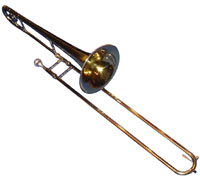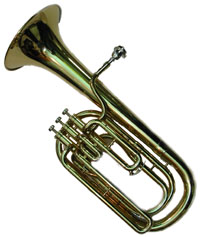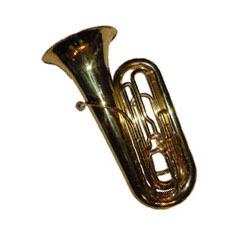The Brass Family
The brass family consists of 5 major instruments with many other similar variations on them. The Trumpet/Cornet, the French Horn, the Trombone, the Baritone/Euphonium, and the Tuba/Sousaphone. Sound is produced by each instrument in the family by buzzing the lips together into the mouthpiece. These instruments are a part of the band program, along with the woodwinds family and the percussion family.

| |
| 
|
| 
|

| |
| 
|